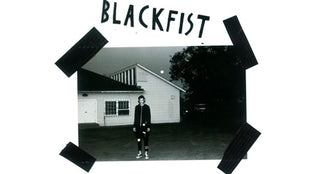Spend a couple minutes talking to Bradley Soileau and one thing becomes clear – he’s one of us. Forget the fact that his rebellious good looks have landed him too many high-end editorials to count and coveted gigs at fashion weeks across the world. Forget the fact the his face became synonymous with Lana Del Rey’s major label debut. Brad is from the underground – he’s a product of skateboarding and loud music. He grew up in a humble town in Louisiana, a far cry from the runways and world of fashion he lives in now. He was scouted on the street while in New York and the rest is history. Fast forward a couple of years and he’s now living in Los Angeles focusing on his label BlackFist and his music. He’ll still take the occasional modeling job, but it’s clear that his passion lies within his own creativity and the world he’s making for himself.
Fresh off the BlackFist launch party at 424 on Fairfax (including a set by Danny Seth), Brad spoke with us about everything that led up to this point, how the general public has a warped view of what being a model is actually like, and what creatively drives him forward.
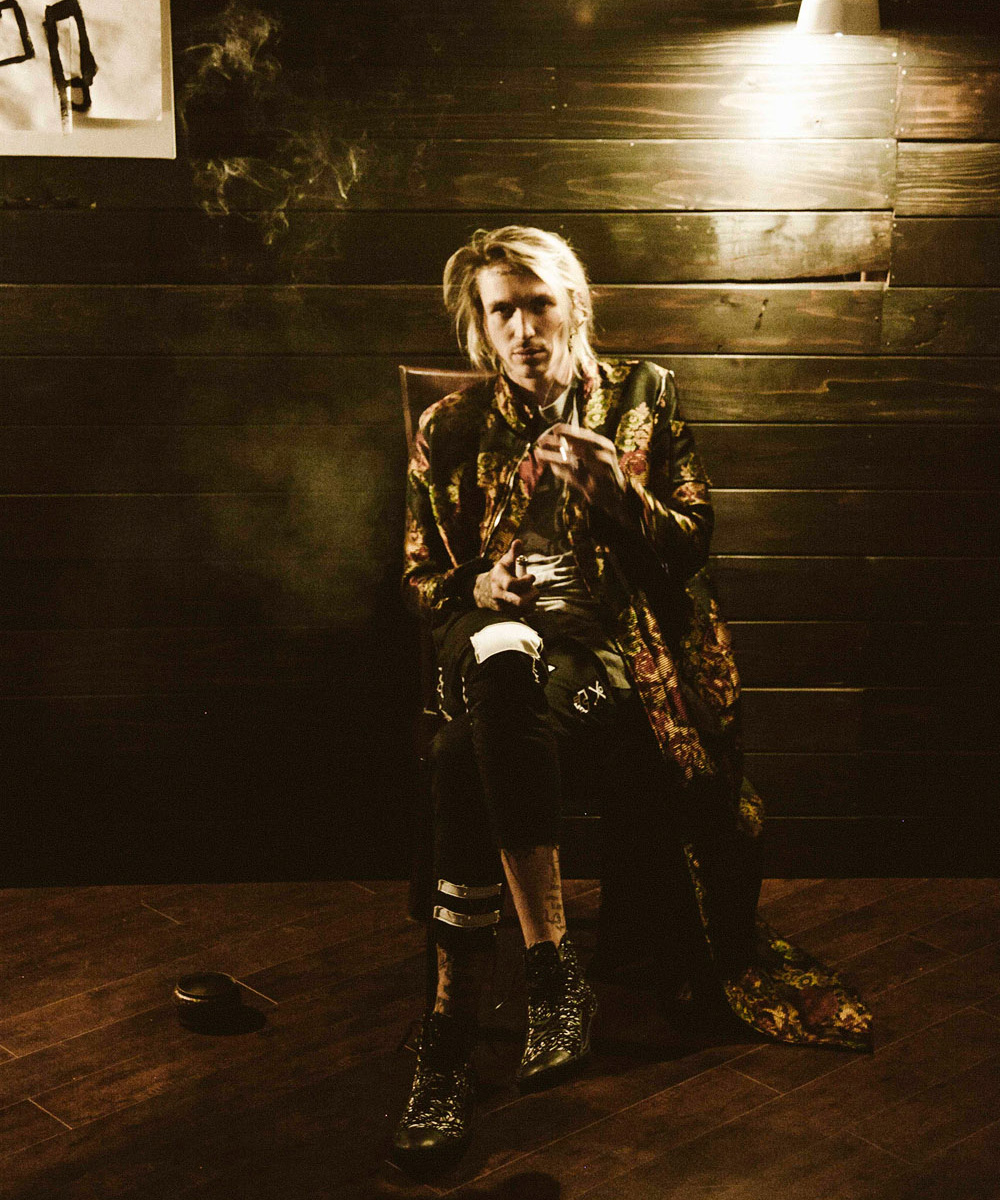
TYLER W: Before BlackFist, you were working [with] 424 on Fairfax, how did that relationship come to be?
BRADLEY SOILEAU: That happened a few years ago. I DJ’ed a Fear of God event and met Guillermo [Andrade] and we ended up hitting it off. We talked, he asked me what I was doing and I was just working at this store called Factory 413 selling lame ass shoes, and he was like “Yo, quit and work here.” Within a week we figured out I would be better as a creative force at 424 than just a sales associate.
And that led to working at Fear Of God, correct? How did working under established labels compare and contrast to your own brand?
As a ‘fashion consultant’ at Fear of God [FOG], basically I was “friends” with Jerry and asked if he had any work for me, and I ended up consulting for a couple of months and a few things I thought up made it into [their] Third Collection. Working under other brands is a great learning experience and stepping-stone if you are getting into your own thing, but having your own thing, you can do whatever the fuck you want.
Do you feel you learned a lot working under those labels? What were some important takeaways from your time spent working with 424 and FOG?
Working for 424 was awesome and I learned a lot from them. You learn a lot as a creative when you work for another brand because you have to learn to be that brand and not yourself, ’cause what you create isn’t necessarily what someone else wants. I didn’t take anything away from FOG, but I learned a lot at 424, about creativity and about business. I’m not much when it comes to the business side of things, so that was great for me to be involved and sometimes hands on with paperwork and shit like that.

What was the driving force behind branching out on your own and forming BlackFist?
I always wanted my own thing, but the driving force was getting financial shit [set up]. This woman who did production for FOG hit me up and told me she would help me get my brand started, so she could own a small part of it because she believed it would work.
I know you had a pretty rough start due to some shortcomings with some of the vendors/partners you were originally working with. Can speak to that story and the struggles of being a fledgling brand that most people don’t mention?
A very hard start. I’ve almost had this brand for a year and a half now and I’m just finally had this launch party at 424 for the brand. The woman who made my samples for me and helped me start my brand just kinda lied about everything she was doing. She [essentially] helped me start a project I wasn’t ready to start and then left me hanging. I used all my resources and got shit going, had a lot of help from Guillermo with networking, [helping me] get out to Copenhagen for the Ciff Raven trade show. [Between] a lot of support from him, my girl and my manager Coleen with Maavven Management, I finally got to where I am now: working on my second collection, still about to release stuff from my first collection. It was a long road but I’m figuring it out day by day.
People don’t understand what it’s like to have a real fashion brand, where you have to get patterns and samples made, and all this shit that costs so much money. It takes a lot of hard work, time, and knowledge. Kids think jacking someone else’s idea and turning it into a graphic tee gives them the right to say they are designers, that have brands, and it’s absurd. They didn’t have to go through the shit I had to go through to get to where I am now. No one tells you just how hard it is gonna be, how much money its gonna cost, or how many people will try and snake you or lie to you or whatever else it may be, you know? It’s crazy but I learned so much and I’m prepared for the worst now, so I can always make this shit happen.
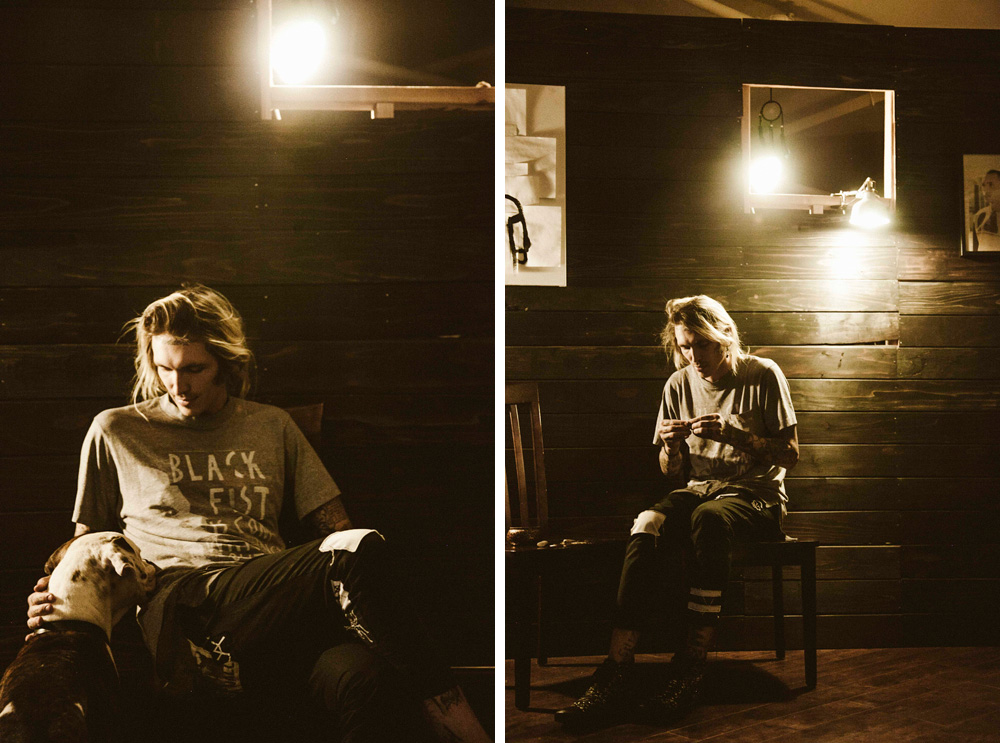

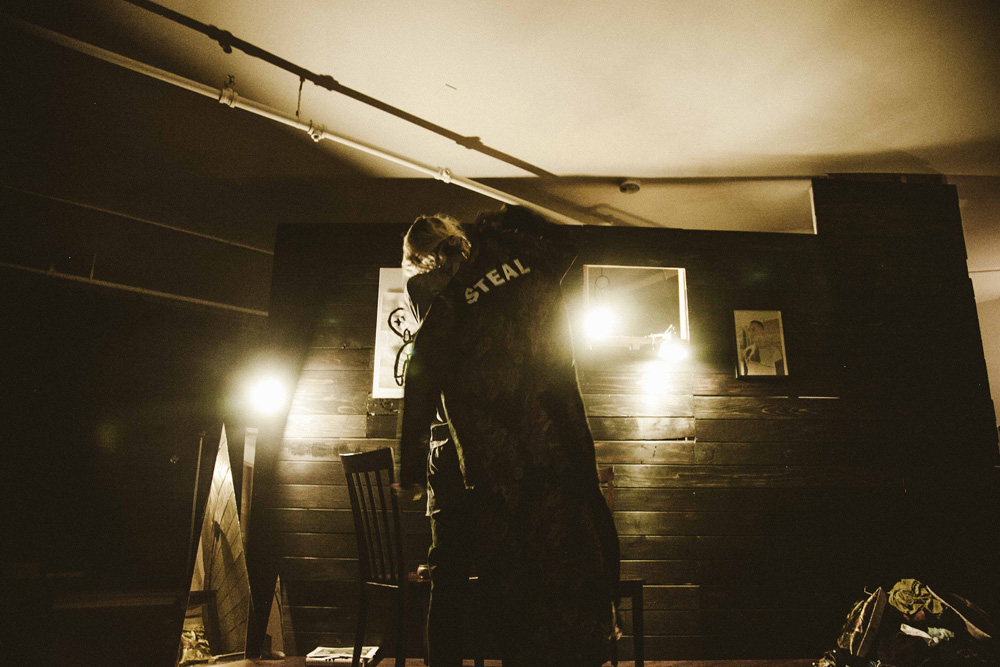
How has your outlook changed as you’re set to debut your second collection at Paris in June?
I mean, I always have a negative outlook [laughs], but this trip to Paris, and all the support I have and all the opportunities in front of me, have made me realize how real this is. Before I started BlackFist I was really worried about my future; I didn’t want to work for other people who didn’t truly appreciate me, I wanted to do what I wanted to do because what I want to do isn’t necessarily what anyone else wants to do [laughs]. I’m fucking crazy. My ideas are not politically correct, nor are they necessarily mainstream sellable ideas, but I know how to make them work and I just wanted to make shit and show the world. So all the things that have led up to today have all helped me to a somewhat more positive outlook on everything.
How do you feel the brand represents your own personal aesthetic?
For me, the brand is literally me. Everything I make I make because I want to wear it, or I’m testing myself and my creativity, pushing what I believe in and stand behind. My aesthetic is someone puking while getting knocked out, so I feel the brands aesthetic is also that, kind of all over the place, but not at the same time, so it works as a branded aesthetic, even tho some could maybe try and say it isn’t, I will always say it is, because it’s my thing and I know what the fuck I’m talking about. everything I do I’m very hands on with. I want people to look at something from BlackFist and be like, “Word, Brad definitely did this.” [laughs]
What does the future of the brand look like in your eyes?
Fashion shows, explosions, people dying, mutants with cat legs, and total world domination. This brand is my thing. It’s all I got, it’s my future or my demise. I don’t know what the future looks like, right now I can only see as far as Paris next month. I can’t even fathom what happens the day after that. I try hard-hard-hard to live in the moment because I can’t predict the future and I can’t change the past. But let’s be real, this shit better be bigger than God or I might kill somebody.
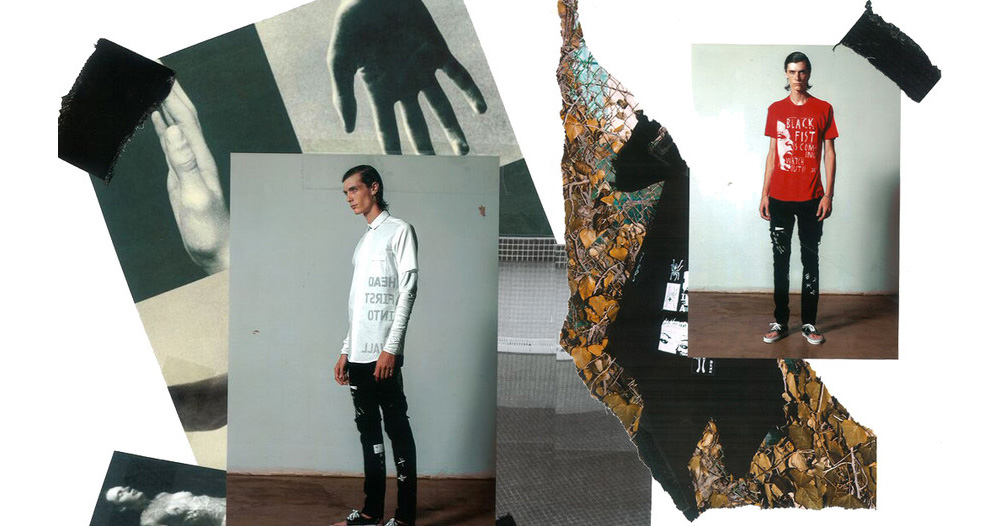
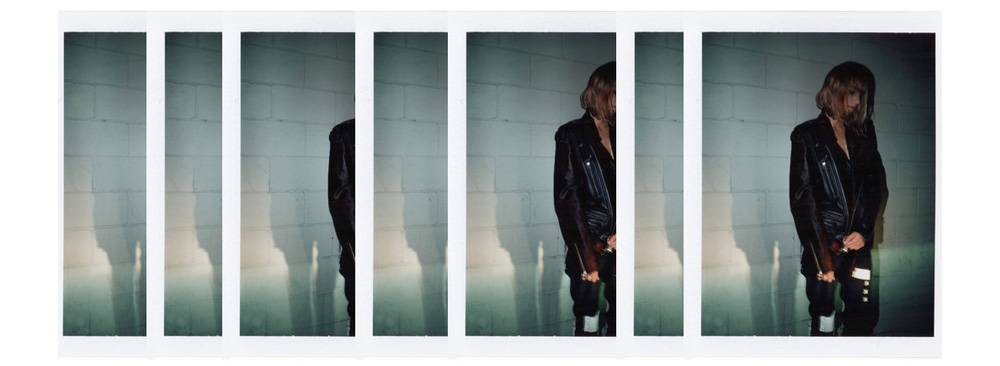
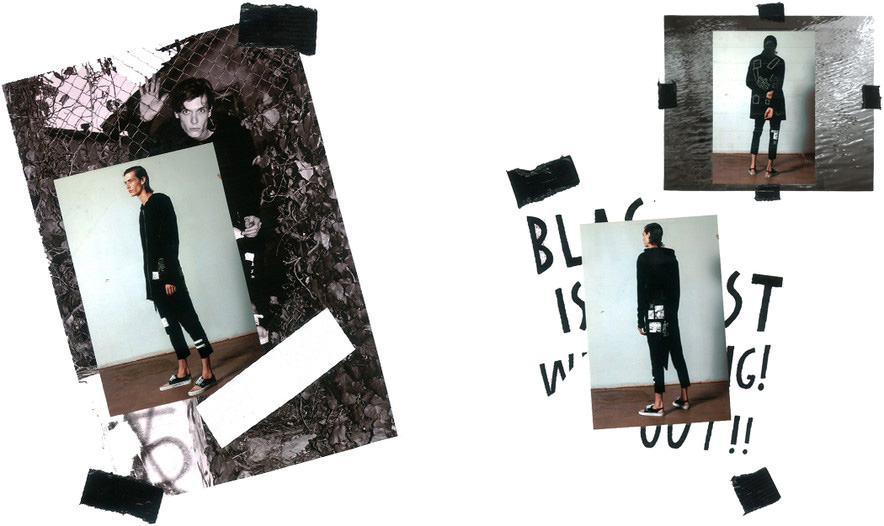
You’ve spoken before about never really vibing with the career of being a model. At what point did you come to that realization?
I don’t really know what point, it was definitely sometime while I was working at 424, and people were starting to respect me for my ideas and not just my modeling career. I think thats when I really started to hate it. I just started to realize I wasn’t doing anything to be proud of. I was just getting my picture taken, and literally anyone can do that. Not anyone would look as good as me, and not that anyone can be a model, but anyone can get their picture taken. [That realization] started to make me depressed that the biggest thing [I had] going for me at the time was modeling. I hated it and it made me not like myself all that much, ’cause I really just wanted people to realize I was a creative force and not just a pretty face.
Do you feel like modeling has opened up doors within the industry for you? Or that you would have still been in the same spot you are in now had you never been scouted?
Modeling has most definitely opened so many doors and given me so many opportunities, and I have a huge following from it, which whether or not I like it, helps and matters to people. I also learned everything I know about fashion from being a model and being surrounded by the best of the fashion world. If I hadn’t gotten scouted I don’t know where my life would be because I was [honestly] headed for disaster.
The general public tends to have a pretty warped perception of what it’s actually like to be a model. Is there anything to the profession that you wish more people knew about?
The whole fucking thing. Like it’s not a magazine editorial. You work for free a lot, you get trade sometimes and it’s usually trash that designers can’t sell. You are literally cattle, literal mannequins. It’s not glamorous and wonderful like everyone believes. It actually is hard, people talk down to you all the time – you are completely dispensable, trash basically. And people think you are this wonderful person that’s rich, happy and healthy while it’s more than likely you are broke and wondering what’s next.
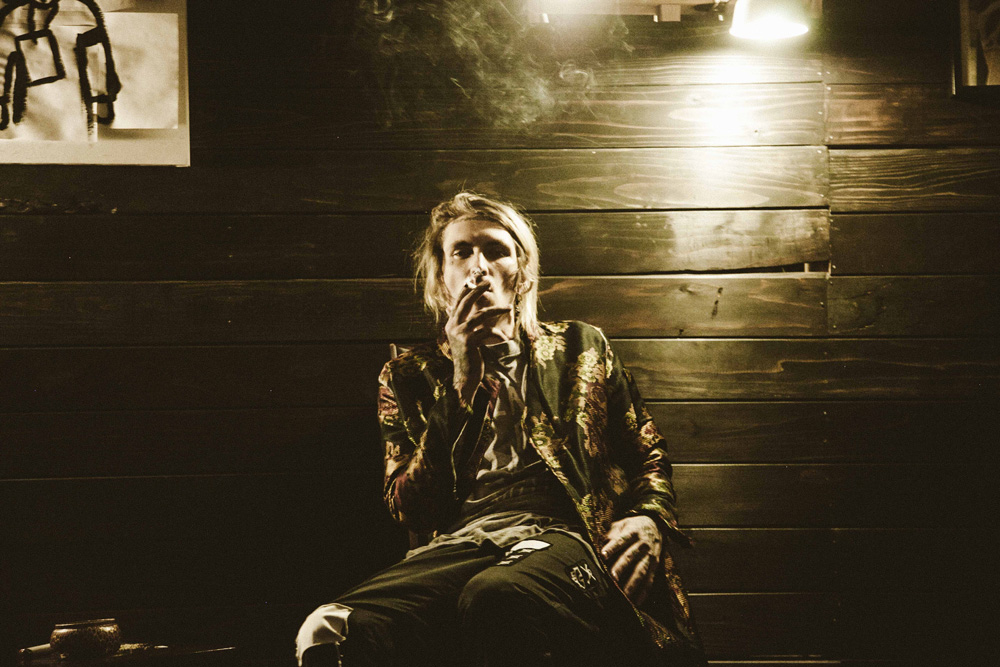
To touch on music for a bit, what was your first introduction to music? Do you still feel connected to the initial stuff you used to listen to?
I was introduced to rock in the womb. I was always around rock music because my dad listened to all that crazy hair metal, glam rock, and shit from the ’70s and ’80s and I just kept up the legacy in the ’90s. I really delved into punk and hardcore when I was 8, because I started playing guitar then and I was a heavy skater at the time. [That is] the music of my youth, and I am still very fond of. It’s also a big part of BlackFist. I wanna teach kids about real punk and hardcore, and not just Black Flag and The Misfits or whatever other punk bands you can buy at Hot Topic.
You’re currently working on a new music project and mentioned that visuals are going to play a big role in this project as well. Why do you feel it is important to have visuals associated with the music?
Because seeing is believing. Throughout time, music has been great, but we all want to see it: we want to see the person making it, we want to know what they look and what they wear. I feel humans are very visual people, so with a musical project, especially anything EDM, I feel there’s a disconnect of humanity to be real. It’s music made by computers. There’s hardly any soul in it, so if you add visuals created by the people who created the music, that opens the human side of that music, where you can possibly see what they felt when they made that song, or at least some kind of visuals that make you feel something ’cause we know electronic music is a bit soulless and harsh and rarely has any feeling. Plus how do you stand out? Doing something different, bringing something new and fresh to the table.

How do you view music as an outlet compared to fashion?
I don’t really think they are any different. Obviously fashion is much more subtle and you really have to do your research and read into what the artist or fashion designer if you prefer, is saying. But to me, music and fashion are super similar, and they definitely go hand in hand.
To wrap this up, what effect do you feel that Los Angeles as a city has had on your creative output? Do you ever miss New York?
Well, if anyone knows about my brand at all and my first collection, they’ll know I don’t like LA all that much. But, as a creative you draw inspiration from everything around you and I literally get the best inspiration from Los Angeles. I still hate it, but I love it at the same time, and the feelings I get from LA are incredible. I feed off of my darkness and sadness to be creative so when I get really bummed about being in Los Angeles, I get really stoked ’cause I know something is gonna come out of those feelings.
And fuck no, I don’t miss NYC. I miss people there, and I miss the energy that used to be there, but let’s be real, that energy is kinda gone, and a lot of those people have made the move to Los Angeles, because the culture of NYC is dying as the prices of everything there rise.
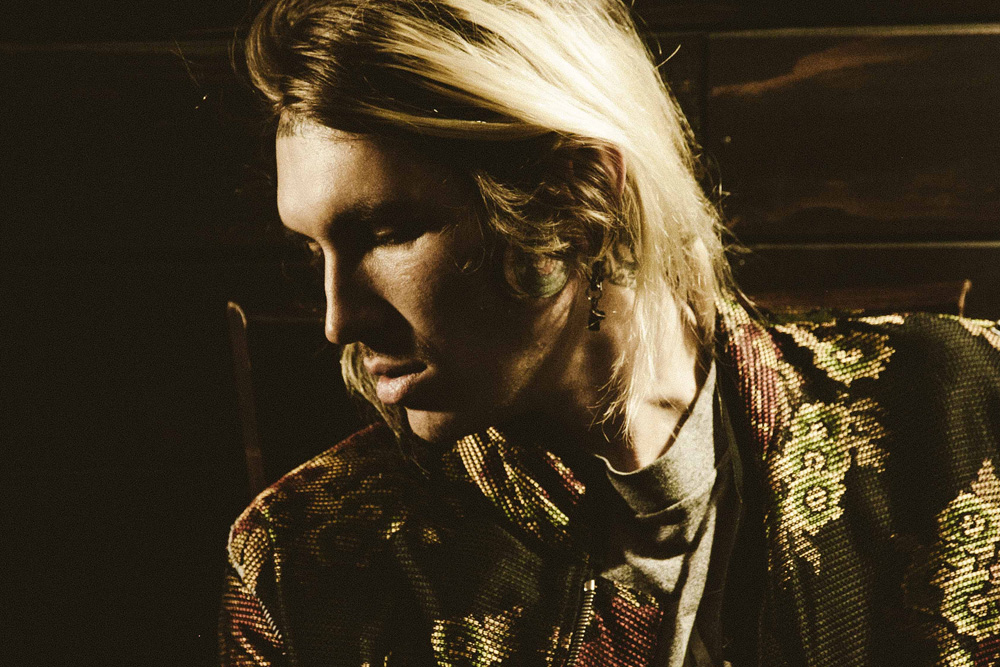
::
Follow Brad on Instagram (@brvdleysoileau) and view the BlackFist website here.
Brad was photographed wearing items from his latest collection in his studio in downtown Los Angeles by Easton Schirra.

